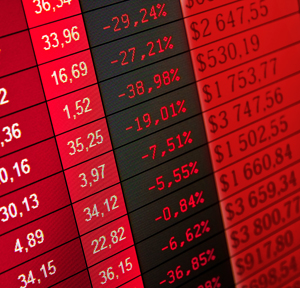Investment Strategies
Tweets Hit Trade, Markets - What Wealth Managers Said

The US president gave markets an unhappy start to the week after he tweeted his threat to slap tariffs on Chinese imports by the end of this week. Wealth managers gave their reactions.
President Trump has thrown a large rock into the trade pond with
his Sunday tweets about raising tariffs on China to 25 per cent,
on the existing $200 billion of tariffed goods by this Friday. He
said he is also considering higher tariffs on the remaining
portion $325 billion of imports.
Markets have sold off, suggesting that investors had started to
relax about protectionist fears, perhaps proving that with this
administration, it never pays to get complacent.
Here are some wealth managers’ reactions.
Thomas Poullaouec, Head of Multi-Asset Solutions APAC at
T Rowe
Price
The risk of a US-China deal not being reached by this coming
Friday has risen significantly, with trade tensions likely to be
a drag over the short term as market consensus has priced in a
done deal.
Asia is likely to bear the brunt of this pain as markets in the
region have been far more complacent than other markets around
the globe, with a drop of anything in the magnitude of 5 to 10
per cent a real possibility. However, over the medium and long
term, we remain constructive on the Asian stock market because of
easing policies, supportive valuations and forecasted economic
recovery. As was recently seen in the Chinese stock market, a
sharp drop would likely lead to subsequent price stability and
create a more conducive environment to buy back into.
Emerging markets stand out as a potential opportunity to leverage
any resulting weakness from the trade induced volatility: we see
little change in the positive domestic stories that are going on
in China involving pharmaceuticals and technology companies. We
would also look at companies which can better benefit from the
stimulus measures directed to boost the country’s GDP (gross
domestic product) growth.
The US-China trade tensions will remain a focus for the months
ahead and the situation remains fluid. With Vice Premier Liu He
travelling to the US, it is reassuring that discussions are still
ongoing and that negotiation tactics are likely to be seen going
forward as both sides edge towards an agreement. A deal in the
short term would amount more to of a ceasefire than result in
grand resolutions on major problem areas such as IP protections
and technology transfers. With tariffs likely to hit the US
consumer harder and with an upcoming US presidential election, it
would appear that time is more on China’s side as President Trump
comes under increasing pressure to show tangible results from
these trade negotiations.
Aninda Mitra, senior sovereign analyst at BNY
Mellon Investment Management
The relative performance of each countries’ equity markets and
the outlook for their cyclical macro positions may have played a
role in driving what may have recently become an impasse in the
negotiations and prompted the outburst from Trump. There has been
talk lately of the US side giving up on efforts to alter China’s
policies on state subsidies as well as the Chinese trying to
re-negotiate earlier concessions.
The macro impacts from a limited tariff war are small. A 10 per
cent US import tariff on $200 billion of goods imports takes off
0.14 per cent from Chinese GDP, assuming perfect substitution
effects from higher tariffs on US import demand. The impact of
retaliatory 10 per cent Chinese tariffs is negligible for the US.
But a 25 per cent tariff rate across more than $500 billion of US
imports from China (and more than $100 billion of US exports to
China) would be much larger. The IMF estimates that the bilateral
imposition of 25 per cent tariffs could cost China around 1.3 per
cent of its baseline GDP and as much as 0.3 per cent of US GDP.
Trade diversion and export/production supply-chain relocation
will also throw up net gainers from Sino-US trade conflict. But
first, the rest of the world will have to also contend with a
slowdown in both China and the US the two largest engines of
global growth as well as a possible tightening of global
financial conditions.
Dong Chen, senior Asia economist at Pictet Wealth
Management, part of Pictet, on the US-China trade
talks.
Trump’s threats increase uncertainty. We still expect a trade
pact ultimately, even though it is likely that it will not cover
the most complicated bilateral issues. It has been our long-held
view that any trade truce could be fragile, especially as concern
about China is also shared by Democrats.
Indeed, we believe US-China trade will remain a key issue beyond
2020 given the bipartisan animosity towards China in Washington.
Should tariffs be imposed, we expect the Chinese authorities to
step up policy support to the economy.
Chinese equity markets, which have rallied since the beginning of
the year, were clearly taken by surprise by the latest Trump
threats and corrected sharply.
But a number of factors could still support Chinese equities in
2019, such as Trump’s eagerness to strike a deal, the scope for
further stimulus in China, and the ongoing inclusion of A-shares
in major equity indices. We therefore do not see any material
cause for concern at this stage, provided bilateral talks
continue and China’s economic momentum holds. Europe and Japan
are more exposed to emerging-market assets and would probably
suffer more from a tariff-related market correction.